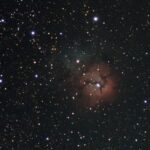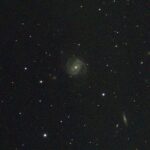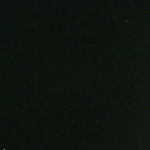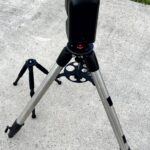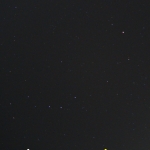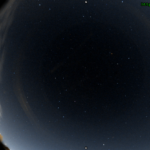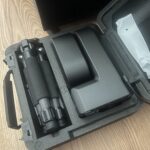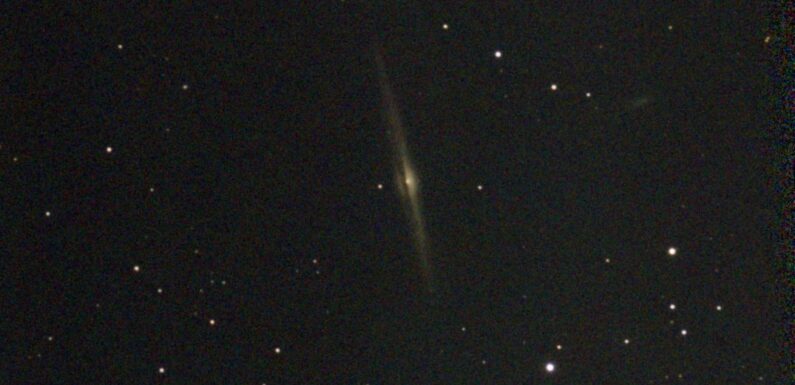
A bright nearly full Moon, a mostly clear sky, and a little cooler than it has been. The image on the AllSky Camera looked like it was day time out even after Sunset due to the Moon being so bright. Not the best night for observing, but not a bad night to set up the SeeStar S50. Ended up being a fun EAA session which included a bright supernova remnant, a couple of interesting dim planetary nebulas, and one of my favorite edge-on spiral galaxies.
I set up the tripod in the driveway and attached the SeeStar in the late afternoon before dark. At around 8:30 PM I powered on the SeeStar, connected to it from the iPad, checked level, and then started observing.
The images from this EAA session were captured using the SeeStar S50 set up on a CG5 tripod. Live stack integrations are 30 minutes or less with no post processing or enhancements performed on the captured images outside of the live stack. The images have been cropped but are otherwise just as they were observed on screen in the SeeStar app.
This EAA session was streamed live on Night Skies Network. I registered the Air Screen Mirroring Receiver app. This works great to mirror my iPhone or iPad screen to my office Windows desktop. No more “unregistered” nag screen every 5 minutes.
M1, the Crab Nebula, is a supernova remnant in the constellation of Taurus. This is a SeeStar live stack of 120 x 10 second exposures with the built-in light pollution filter.
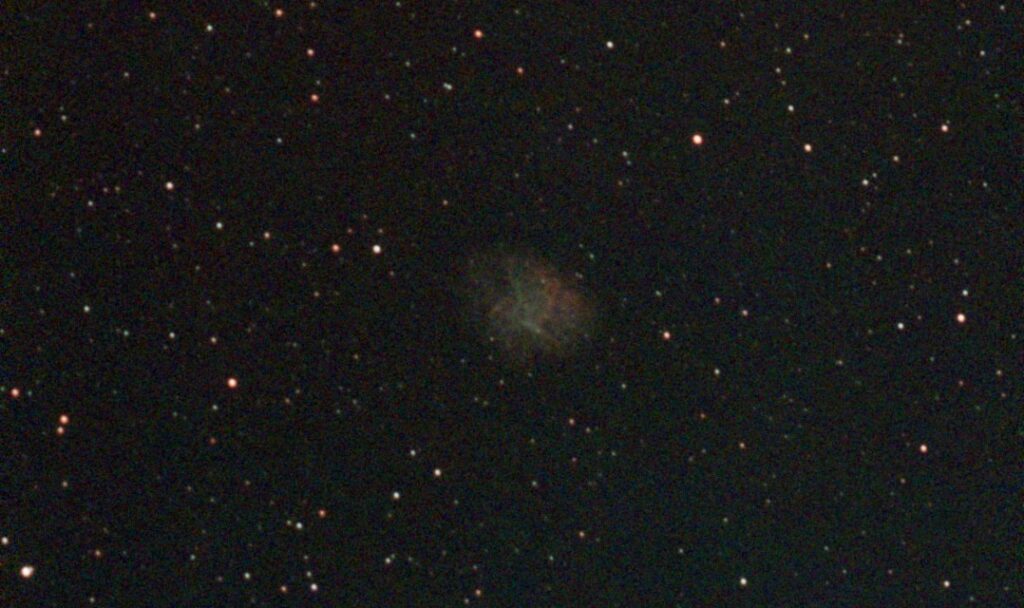
I was able to see evidence of this supernova remnant after the first couple 10 second frames. It stacked up really nice… which was pretty surprising due to the fact most of these frames were captured prior to astronomical twilight with a nearly full Moon rising. A nice bit of color and some of the filament structures can be observed.
SH 2-274, the Medusa Nebula, is a planetary nebula in the constellation of Gemini. This is a SeeStar live stack of 122 x 10 second exposures with the built-in light pollution filter.
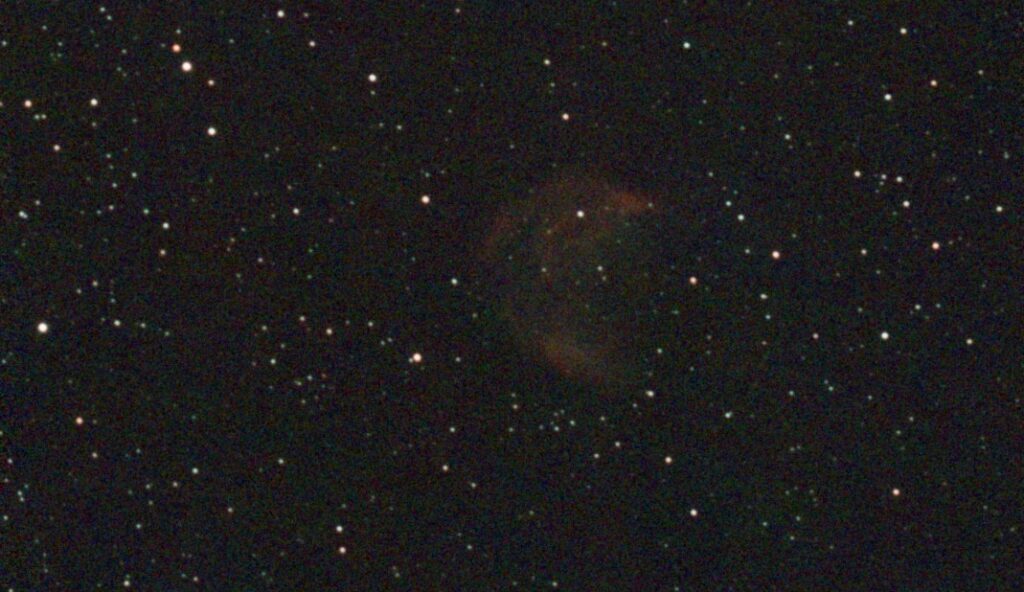
This is a new one for me. The nebula was pretty evident after a couple of minutes. Not much of the structure is resolvable but a bit of red, orange, and just a very little green/blue. The Moon did not do us any favors here, but this is my first time capturing this planetary nebula and the SeeStar S50 did a commendable job. Looking forward to getting this one in the FOV of the SV503 102ED at some point.
Jones-Emberson 1, the Headphone Nebula, is a planetary nebula in the constellation of Lynx. This is a SeeStar live stack of 96 x 10 second exposures with the built-in light pollution filter.
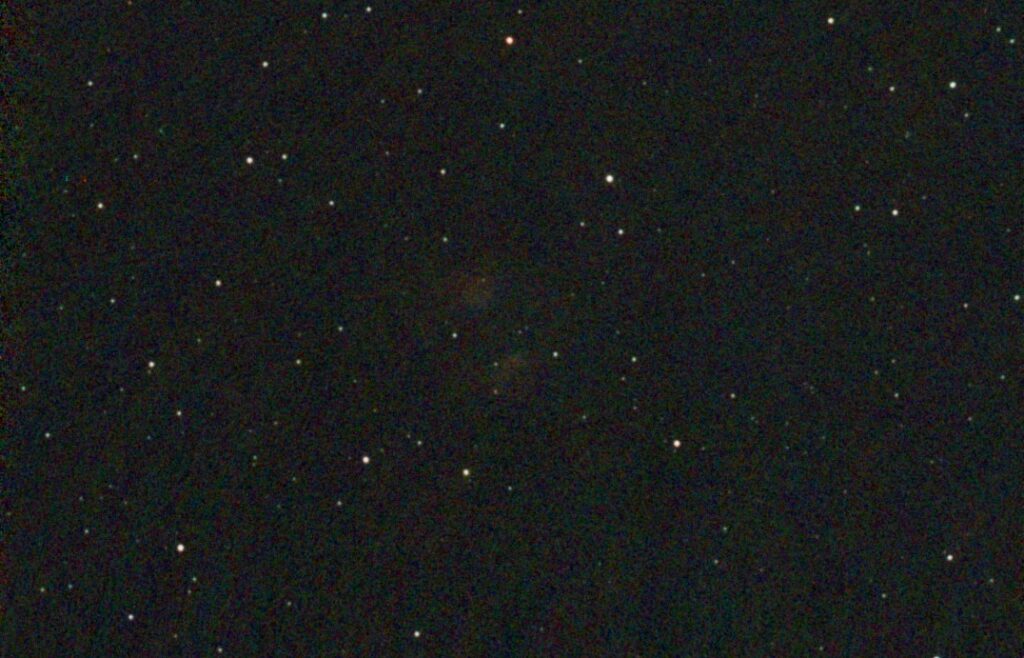
I captured this one in the SV503 102ED for the SkywatcherUSA TOTM in mid-March 2024. Took around 3 or 4 minutes of exposures in the live stack before there was any evidence of the nebula. Can just resolve the “ears” of the headphone and maybe just a little of the outer edge of this faint planetary nebula. Again fighting the Moon a bit, but a decent showing especially with how bright the Moon was and how dim this object is.
NGC 4565, the Needle Galaxy, a edge-on spiral galaxy in the constellation of Coma Berenices. This is a SeeStar live stack of 96 x 10 second exposures with the built-in IR cut filter.
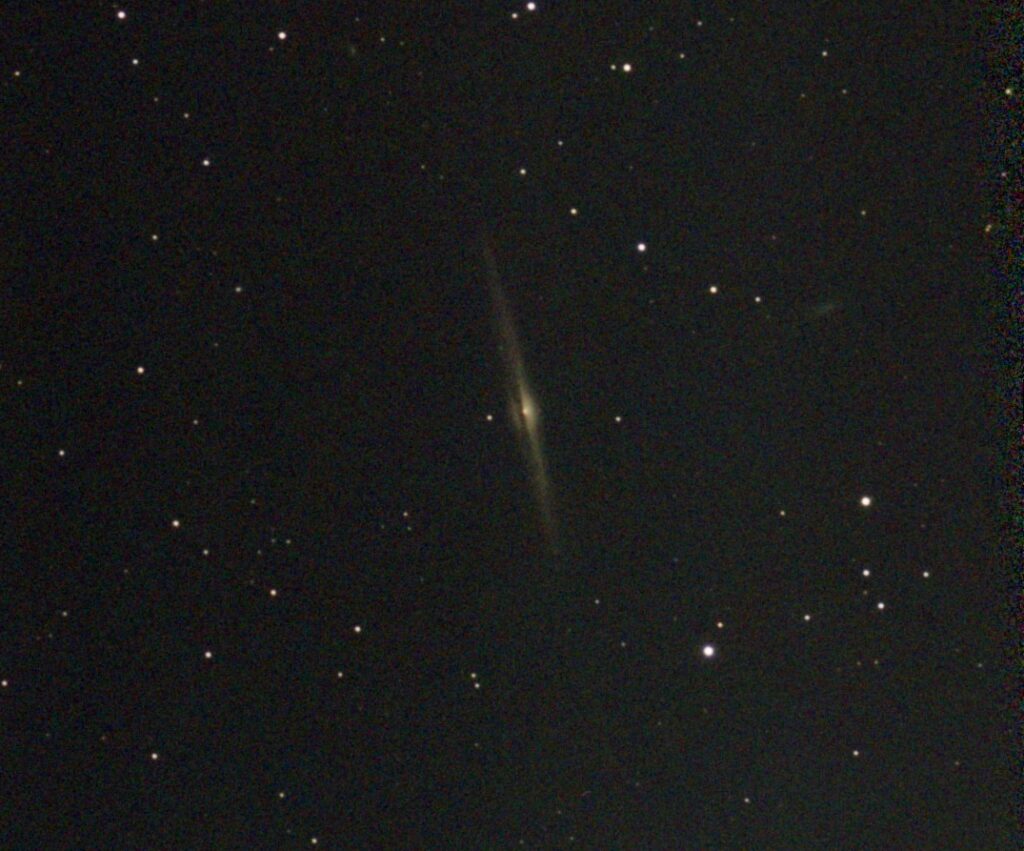
The Needle Galaxy is one of my favorite edge-on galaxies and this view did not disappoint. The dust lane cutting through the galaxy looks pretty amazing. The faint fuzzy up and to the right is the barred spiral galaxy NGC 4562 which is also known as NGC 4565A. Nice object to end the night.
I powered down and packed up at around 10:30 PM. By packed up I mean, unscrewed the SeeStar S50 from the tripod and brought it in the house. The temperature had dropped to the low 40s, definitely cooler than it has been the last week or so. There was a bit of moisture forming on the shell of the SeeStar, but no dew on the front objective. Nice couple hours of observing with the SeeStar S50. Observing which I probably would not have done with my other rig due to the less than optimal conditions.


